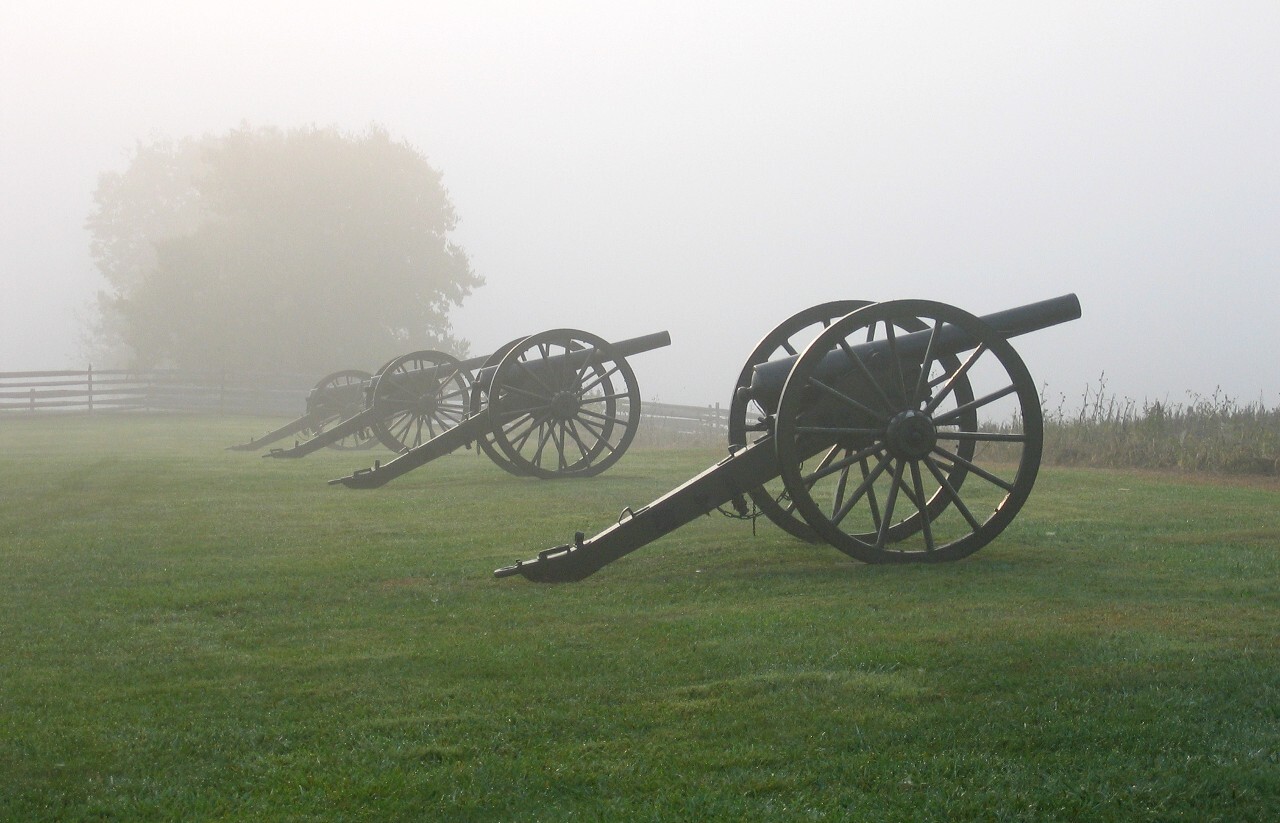Western Maryland is home to some of the most beautiful places to go hiking in the eastern U.S., as well as three scenic byways — the Maryland Historic National Road Scenic Byway, The Chesapeake & Ohio (C&O) Canal Scenic Byway, and The Antietam Campaign Scenic Byway — all of which make terrific options for your next great summer road trip. In Washington County, you’ll find everything from historic homes and forts dating back to the early 18th century to battlefields and cemeteries telling the stories of those who helped change the course of the Civil War. Here’s where every history buff should visit on their next trip to this fascinating corner of the country.
Historic Civil War Battlefields

Perhaps the most well-known historic site in Western Maryland, Antietam National Battlefield is where the bloodiest single-day battle in American history took place, with 23,000 soldiers losing their lives or wounded that fateful day on September 17, 1862. Along with Union victories at nearby Monocacy National Battlefield and South Mountain State Battlefield, the fighting helped turn the tide of the Civil War and led Lincoln to issue his Emancipation Proclamation, which happened a few days later on September 22, 1862.
While a number of events will be held over the weekend of September 17, 2022, to mark the 160th anniversary of the Battle of Antietam (check the website) you can learn more about its significance and those who died there at the Newcomer House visitor center and pay your respects at the nearby Antietam National Cemetery. Stop by the Pry House Field Hospital Museum for a look at Civil War medicine, or for a unique take on the battle, hit the Antietam Creek Water Trail to visit a number of key sites by kayak or canoe.
Located just outside Boonsboro, South Mountain State Battlefield marks the site of Maryland’s first Civil War battle, which ended in a Union victory and essentially prevented a Confederate invasion. About 15 minutes away, pay your respects to the many journalists and artists killed while covering the Civil War at the War Correspondents Memorial Arch in Gathland State Park, built by George Alfred Townsend, himself a Civil War correspondent, in 1896.
Sites Dating Back to the Early 18th and 19th Centuries

Nestled along the Potomac River and built in 1756 to protect early settlers during and after the French and Indian War, Fort Frederick was also used to hold British prisoners during the Revolutionary War. By 1860, the farmland that now makes up Fort Frederick State Park was owned by Nathan Williams, the second-richest free African American man in all of Washington County, who continued to grow and sell crops to both armies during the Civil War, all while helping slaves to escape through this part of Maryland. Learn more about the fort’s fascinating past, then stroll one of its scenic nature trails.
For a change in scenery and the chance to take on some of the area’s scenic hikes including a small section of the legendary Appalachian Trail, head to Washington Monument State Park. In 1827, Boonsboro residents constructed a massive 30-foot tall stone tower — the first-ever Washington Monument — in honor of our first president. Hike to check it out in person, then stop by the museum for more background information about its role in local history.
Learn more about Hagerstown’s German immigrant founder at the Jonathan Hager House Museum, where you can tour the home he constructed in 1739. What began as “Hager’s Fancy,” a frontier fort at the western edge of the Maryland colony that later served as a trading post, was purchased by the Washington County Historical Society in 1944 and opened as a museum in 1962. Today, you can visit the historic home and view its furnishings, preserved as they were during the property’s 18th-century heyday.
Black History Sites in Washington County
While slavery did play a significant part in the region’s history from the early 18th century until Maryland abolished it in 1864, Hagerstown is home to several Underground Railroad sites you can visit today. Read the historic markers along Jonathan Street to learn about the legacy of African Americans who helped put Hagerstown on the map, like Walter Harmon, a wealthy entrepreneur who built 37 houses, a bowling alley, a dance hall, and the Harmon Hotel, highlighted in The Green Book as one of the only accommodations open to Black travelers during segregation. It also happens to be where baseball legend and Hall of Famer Willie Mays stayed in 1950 when he played his first professional game with the Trenton Giants at Municipal Stadium.

Closer to Harpers Ferry National Historical Park, the Kennedy Farm was the staging area for abolitionist John Brown’s 1859 raid on the federal arsenal in Harper’s Ferry. Meant to help create a republic for fugitive slaves, the raid went on for three days but was ultimately unsuccessful. His followers, a mix of Black and white abolitionists, were captured or killed, while Brown himself was tried for treason and hanged a few months later. It did, however, instill a sense of fierce conflict between northerners and southerners regarding the practice of slavery that only intensified over the next two years until the start of the Civil War. Today, the John Brown Raid Headquarters is a National Historic Landmark, though it’s temporarily closed for restoration.
Also worth a look are two of Hagerstown’s oldest African American churches, the Asbury United Methodist Church, founded in 1818 (its current building dates to 1879, as it was rebuilt after a fire), and the Ebenezer African Methodist Episcopal Church, founded in 1840. For more information about the region’s rich African American history and culture, head to the Doleman Black Heritage Museum, which houses a vast collection of photos, books, birth records, deeds of slave sales, paintings, sculptures, and other artifacts from the 19th and 20th centuries.

undefined


